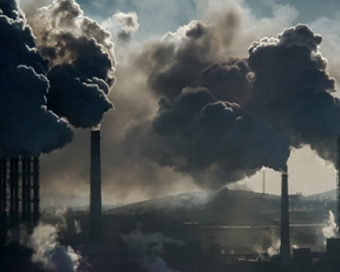Gallery
 PM Modi visit USA
PM Modi visit USA Only the mirror in my washroom and phone gallery see the crazy me : Sara Khan
Only the mirror in my washroom and phone gallery see the crazy me : Sara Khan Karnataka rain fury: Photos of flooded streets, uprooted trees
Karnataka rain fury: Photos of flooded streets, uprooted trees Cannes 2022: Deepika Padukone stuns at the French Riviera in Sabyasachi outfit
Cannes 2022: Deepika Padukone stuns at the French Riviera in Sabyasachi outfit Ranbir Kapoor And Alia Bhatt's Wedding Pics - Sealed With A Kiss
Ranbir Kapoor And Alia Bhatt's Wedding Pics - Sealed With A Kiss Oscars 2022: Every Academy Award Winner
Oscars 2022: Every Academy Award Winner Shane Warne (1969-2022): Australian cricket legend's life in pictures
Shane Warne (1969-2022): Australian cricket legend's life in pictures Photos: What Russia's invasion of Ukraine looks like on the ground
Photos: What Russia's invasion of Ukraine looks like on the ground Lata Mangeshkar (1929-2022): A pictorial tribute to the 'Nightingale of India'
Lata Mangeshkar (1929-2022): A pictorial tribute to the 'Nightingale of India' PM Modi unveils 216-feet tall Statue of Equality in Hyderabad (PHOTOS)
PM Modi unveils 216-feet tall Statue of Equality in Hyderabad (PHOTOS)Hockey India has announced a 54-member core probable squad for the upcoming senior men’s
- Satwik-Chirag return as BAI names 14-strong squad for BWF Sudirman Cup Finals 2025
- Men’s Sr Hockey Nationals to be played in division-based format from April 4
- Mensik denies Djokovic 100th title in Miami final
- KIPG: Son of a vegetable vendor, Bihar’s Jhandu Kumar eyes Worlds, 2028 Paralympics
- Hardik Singh credits hard work and team unity for receiving HI Midfielder of the Year award
Europe to launch satellite to tackle greenhouse gas emissions Last Updated : 03 Nov 2021 01:48:35 PM IST 
The European Space Agency (ESA) and the European Union's Earth-monitoring programme Copernicus are working on a "game-changing tool", a dedicated constellation of satellites that will track emissions of man-made greenhouse gases and help meet climate goals.
The new mission was announced during the ongoing UN Climate Change Conference COP26 in Glasgow.The constellation, called European CO2 Monitoring and Verification Support Capacity (CO2MVS) on anthropogenic emissions, is currently being developed by ESA and the European Organisation for the Exploitation of Meteorological Satellites (EUMETSAT).The constellation of dedicated satellites will measure concentrations of carbon dioxide and methane in the atmosphere with an unprecedented combination of coverage, detail, and accuracy.The satellites will even be capable of looking at individual carbon dioxide and methane sources such as power plants and fossil fuel production sites.Observations from these satellites will be assimilated through sophisticated computer modelling of the Earth's atmosphere and biosphere by scientists at Copernicus Atmosphere Monitoring Service (CAMS) and will be routinely used to quantify anthropogenic CO2 emissions."Since the start of the industrial revolution, we have seen carbon dioxide levels increase faster than ever before, and there is an increasing urgency to take real steps to make very significant emission reductions," Richard Engelen, deputy director of CAMS, said in the statement."By providing globally consistent and high-quality data on anthropogenic emissions we can support policymakers with this enormous challenge."The new CO2MVS constellation will be fully operational by 2026, in time to help the world review its progress in curbing greenhouse gas emissions as required by the UN-mandated Paris Agreement.The agreement requires nations to take stock of their progress every five years to ensure that countries are on track to meet their greenhouse gas reduction targets. The first such analysis is expected to conclude by 2023, and the new constellations could be part of the second, due to be completed in 2028.Carbon dioxide, which is released during fossil fuel combustion and in agriculture, is the most common climate-warming gas, accounting for nearly 80 per cent of all greenhouse gas emissions. Methane, while accounting only for about 16 per cent of global greenhouse gas emissions, is 80 times more potent in warming up Earth's atmosphere than carbon dioxide and therefore also a cause for concern.IANS Brussels For Latest Updates Please-
Join us on
Follow us on








172.31.16.186







